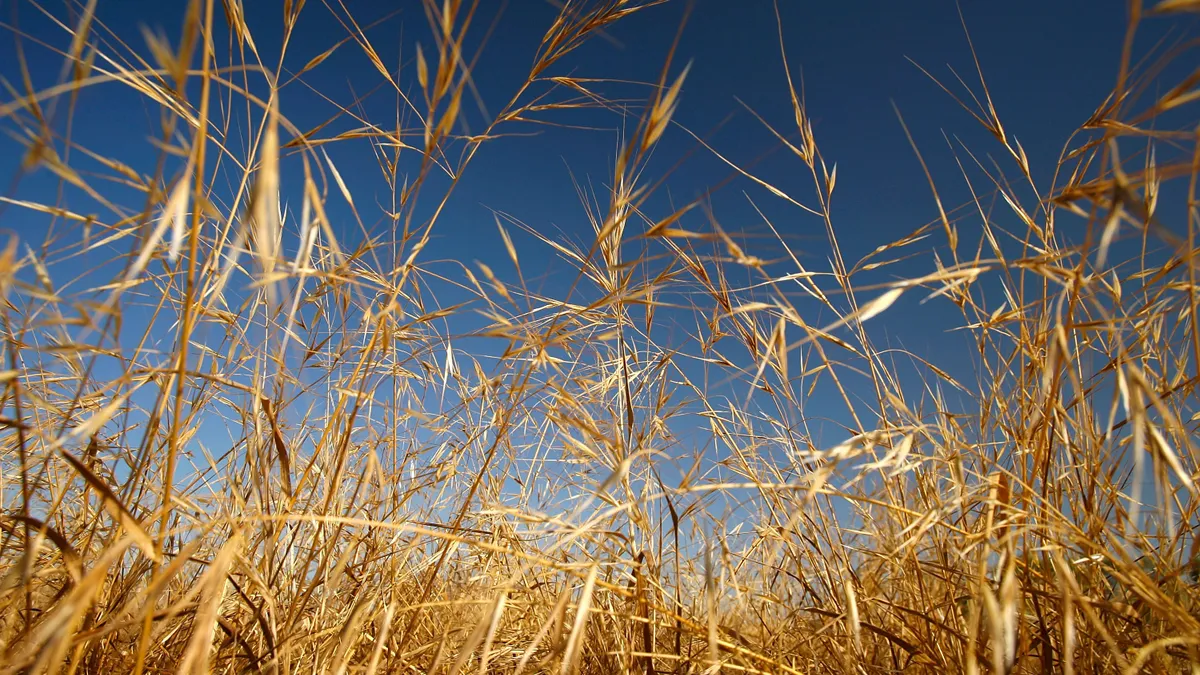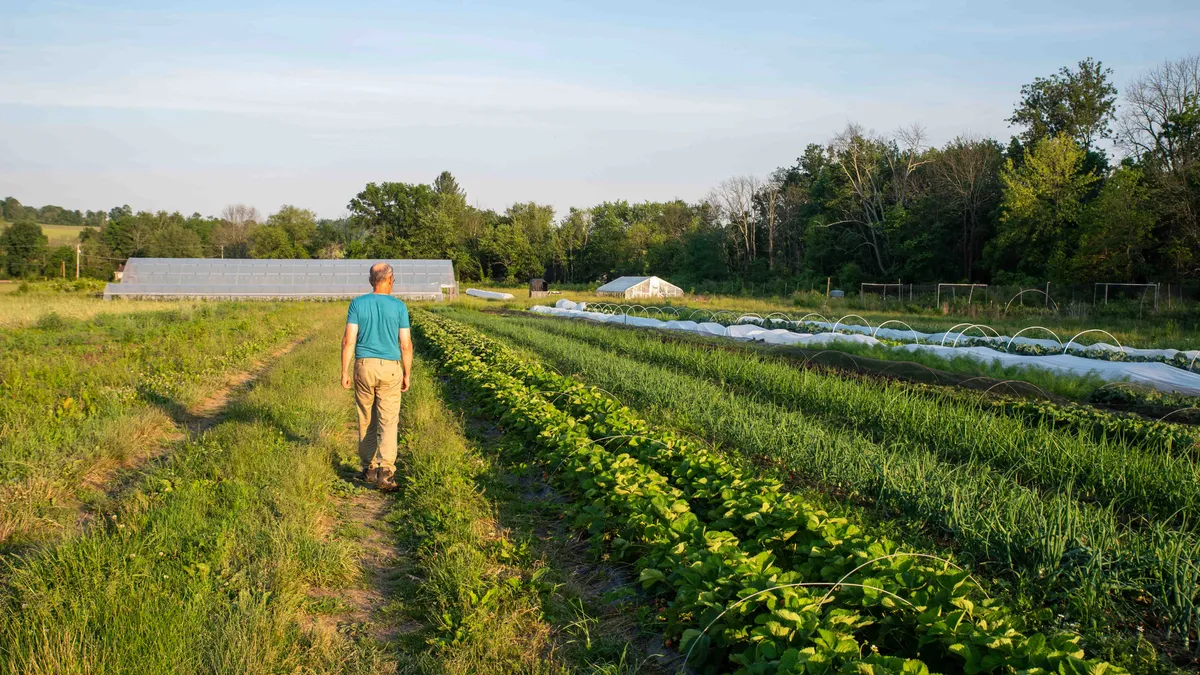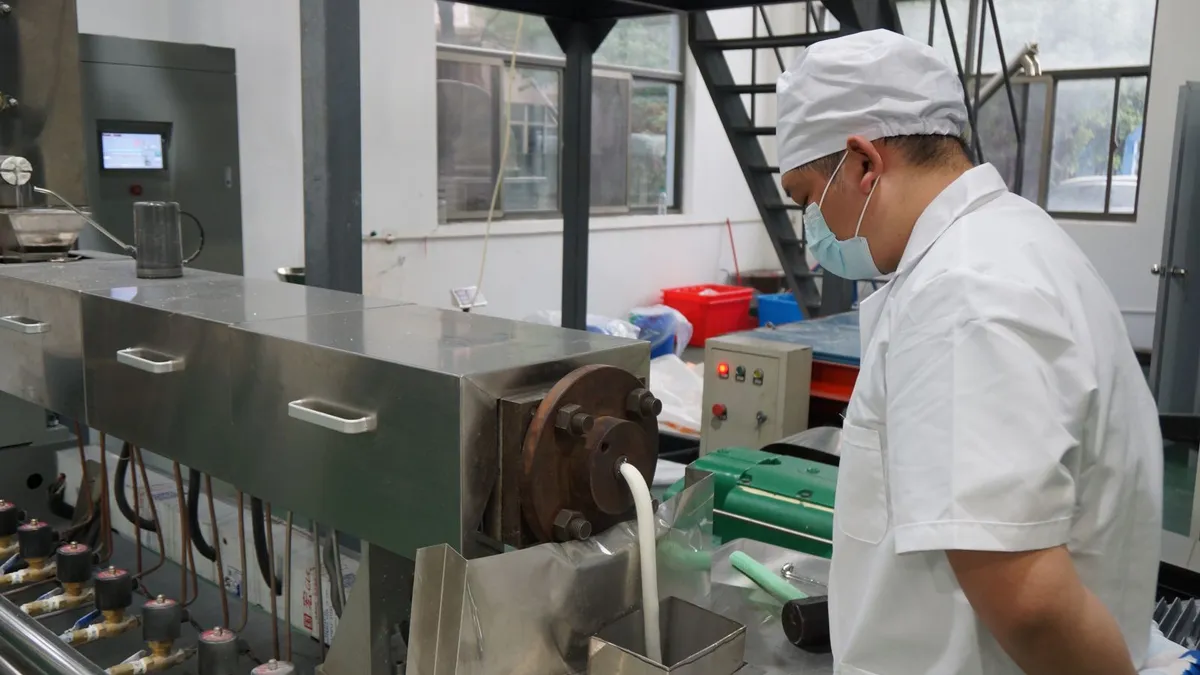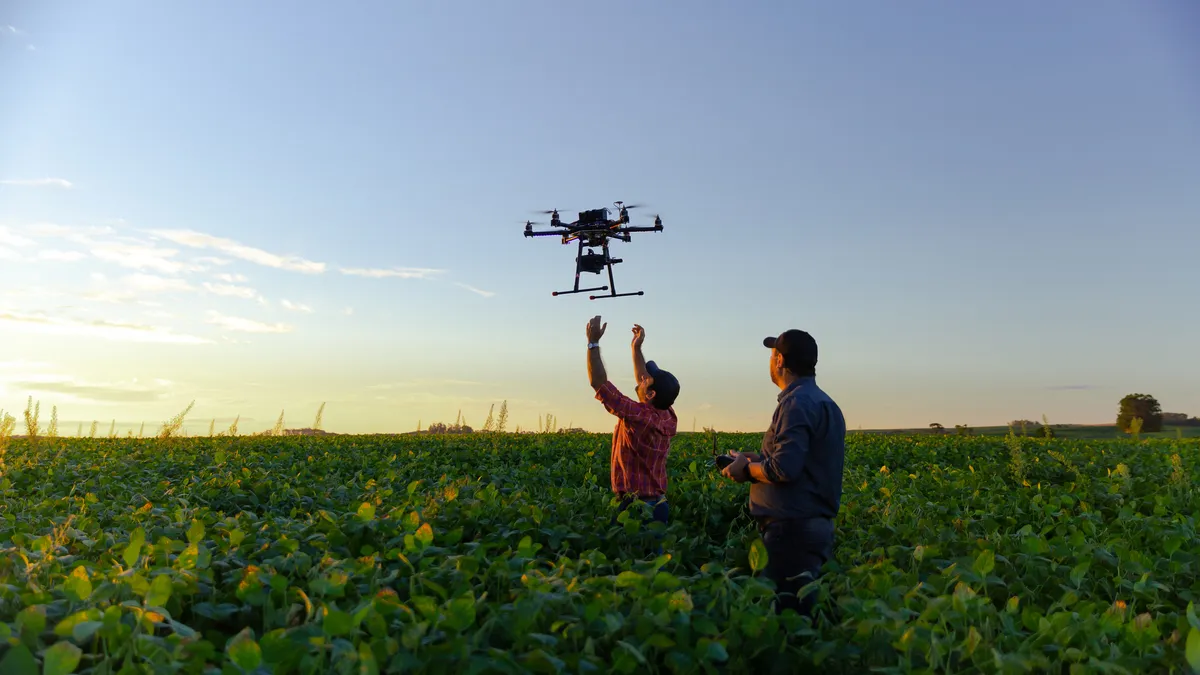A relentless heat wave baking the U.S. is worsening conditions for farmers and ranchers, leaving some with few options to save their crops or livestock.
While severe showers and thunderstorms are expected for parts of the Midwest in the upcoming days, expansive heat is continuing to affect much of the southern tier of the country, according to the National Weather Service, with heat indexes approaching 120 degrees in parts of California, Texas and Louisiana.
The prolonged high temperatures mean there's little producers can do to mitigate risk, experts say. They can find shade for their animals or increase their irrigation, but a lot of it depends on where the crops and livestock are in the developmental cycles, as well as geographically.
Here’s a closer look at how the lingering heat is impacting some of the country’s major crops and livestock, and what farmers can do to mitigate their risk.
Heat roasts corn as soybeans remain resilient
Brad Rippey, a meteorologist for the U.S. Department of Agriculture’s Office of the Chief Economist, said the growing season has been up and down in the Midwest and other parts of the country, with moisture deficits starting to accumulate as early as April, affecting major cash crops.
Last year brought on considerable drought with little winter snow accumulation and elevated temperatures throughout spring. Rippey said cooler temperatures and light summer rain helped alleviate some drought conditions until temperatures took off and a wave of heat engulfed the entire country.
“We’re now seeing the worst heat of the year,” he said.
The extreme heat coincides with the corn silking stage, which is when crops start the fertilization process and are most vulnerable to the effects of heat. By the end of July, roughly 84% of U.S. corn had reached the silking stage, according to USDA’s weather and crop bulletin
Ignacio Ciampitti, an agronomy professor at Kansas State University, said that “we will be seeing a large impact on yields” if the heat lingers around the state. He estimated potential yield losses up to 40%, but numbers could improve as corn moves out of the silking stage and temperatures begin to regulate.
Soybeans, however, could avoid the brunt of the heat. Most of the country’s soybeans, which get planted later than corn, are in the blooming stage, when they are surprisingly resilient.
“Being early is a good sign in the sense that if we have a reduction in temperatures or more precipitation in the coming weeks, we might have an opportunity to recover,” Ciampitti said.
Still, a good portion of soybean crops are further along in the growing process and more susceptible to heat stress. Those starting to produce pods may abort seeds due to heat stress. About 50% of U.S. soybean acreage had begun setting pods, according to the bulletin, with 52% in good to excellent condition.
Ciampitti said irrigation can help reduce plant temperatures, but it doesn’t really take away the direct effects of the heat wave.
“It really depends on what happens in the next coming weeks,” he said about potential crop losses.
Shrinking cattle herds under pressure
High temperatures are also taking a toll on the nation's cattle supply, which is already at record lows.
David Anderson, a professor and extension economist at Texas A&M University, said high temperatures during the day can put serious stress on cattle and prevent them from gaining weight.
Meanwhile, cattle supplies are at record lows following years of drought and steady inflation that drove up prices and forced ranchers to sell off their herds. About 37% of the U.S. cattle inventory is being affected by moderate to extreme drought as of last week, according to the National Drought Mitigation Center.
Last year at least 2,000 cattle reportedly died following a heat wave that rolled through southwestern Kansas. Anderson said in that instance, cattle couldn’t recover because temperatures were too high at night. The current heat wave has led ranchers to experience similar struggles in Texas and other parts of the country.
However, there are measures livestock producers can take to reduce heat-related stress, such as providing ample water and shelter for their animals. They can also improve airflow, shift feeding times to later in the day and avoid livestock handling if possible, according to guidance from Mesonet, a weather and environmental data network. In emergency situations, drenching cattle in water is recommended.
All things considered, “there’s not much you can do," Anderson said. "It’s hot. You’re sort of at the mercy of the weather and rainfall.”
More crops at risk as heat wave continues
How long these hot conditions are expected to last is uncertain. Looking at the weather models, Rippey described a powerful ridge across North America for the next few weeks, with extreme heat likely to persist in the Southwest through Texas and extending east to southern Atlanta.
While thunderstorms and showers developed in late July, persistently hot, dry weather has plagued the western Gulf Coast since June with above average temperatures across most of the country, according to USDA’s bulletin. This has not only led to crop stress, but also to more wildfire activity and declines in rangeland and pasture conditions.
Currently, scorching heat is affecting the southern part of the Plains, notably Kansas, Oklahoma and Texas, bringing adverse impacts to cotton and sorghum summer crops, according to a USDA weather report. Northern storms, meanwhile, are slowing winter wheat harvests but benefitting summer crops.
Scientists and experts attribute much of the extreme heat and storms affecting the globe to climate change and El Niño, a pattern of unusual warming in the eastern Tropical Pacific Ocean.
The early emergence of El Niño this year has already led to significant heat and drought through the Caribbean and Central and South America, Rippey said, but whether it has an impact on the heat wave sweeping across the U.S. is more difficult to discern.
According to the National Weather Service, El Niño’s influence on the U.S. is weak in the summer and more pronounced in the late fall through spring. What this usually means is wetter conditions across the South in the cooler months and drier, warmer conditions to the North.
“It is possible, but it’s too early to tell,” Rippey said about El Niño’s impact on the heat wave.



















